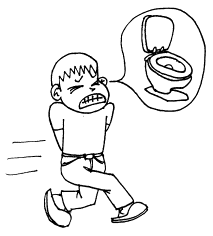Description and Size
Parasitic Ciliates in humans (Balantidium coli)
Balantidium coli is the only ciliate known to parasitize humans. Balantidium coli has 2 developmental stages: a trophozoite stage and a cyst stage. Trophozoites live in the large intestines of the host animals. It is known for being the largest protozoan parasite of humans, and it is for the trophozoite stage that it earns this distinction. Trophozoites can measure between 50-130 mm long by 20-70 mm wide. The cyst is the infective stage of the Balantidium coli life cycle. Encystation is the process of forming the cyst; this event takes place in the rectum of the host as feces are dehydrated or soon after the feces have been excreted. Excystation produces a trophozoite from the cyst stage, and it takes place in the large intestine of the host after the cyst has been ingested. Cysts are smaller than trophozoites, measuring 40-60 mm across. Cysts are round and have a tough, heavy cyst wall made of one or two layers.
Balantidium coli causes balantidiasis, which has symptoms that include chronic diarrhea, occasional dysentery (diarrhea with passage of blood or mucus), nausea, foul breath, colitis (inflammation of the colon), abdominal pain, weight loss, deep intestinal ulcerations, and possibly perforation of the intestine. The transmission is via the oral-fecal route, and if left untreated, fatality is 30%; so it is important to get a diagnosis if experiencing related symptoms. Humans can become infected by eating and drinking contaminated food and water that has come into contact with infective animal or human fecal matter. Infection can occur in several ways, including the following examples: eating meat, fruits, and vegetables that have been contaminated by an infected person or contaminated by fecal matter from an infected animal, drinking and washing food with contaminated water, or having poor hygiene habits.

Animal Reservoir for Balantidium coli
Parasitic Ciliates in fish: Ichthyophthirius multifiliis
Ichthyophthirius multifiliis is a ciliated protozoan that causes “Ich” or “white spot disease.” This disease is a major problem to aquarists and commercial fish producers world wide. Ichthyophthirius is an important disease of tropical fish, goldfish, and food fish. The disease is highly contagious and spreads rapidly from one fish to another. It can be particularly severe when fish are crowded. While many protozoans reproduce by simple division, a single “Ich” organism can multiply into hundreds of new parasites. This organism is an obligate parasite which means that it cannot survive unless live fish are present. It is capable of causing massive mortality within a short time. An outbreak of “Ich” is an emergency situation which requires immediate treatment: if left untreated, this disease may result in 100% mortality. “Ich” is the largest known parasitic protozoan found on fishes. Adult organisms are oval to round and measure 0.5 to 1.0 mm in size. The adult is uniformly ciliated and contains a horseshoe-shaped nucleus which can be seen in older individuals.
The classic sign of an “Ich” infection is the presence of small white spots on the skin or gills. These lesions look like small blisters on the skin or fins of the fish. Prior to the appearance of white spots, fish may show signs of irritation, flashing, weakness, loss of appetite, and decreased activity. If the parasite is only present on the gills, white spots will not be seen at all, but fish will die in large numbers. In these fish, gills will be pale and very swollen. White spots should not be used as the only means of diagnosis because other diseases may have a similar appearance. Gill and skin scrapings should be taken when the first signs of illness are observed. If the “Ich” organism is seen, fish should be medicated immediately because fish which are severely infected may not survive treatment.